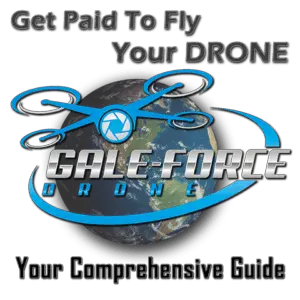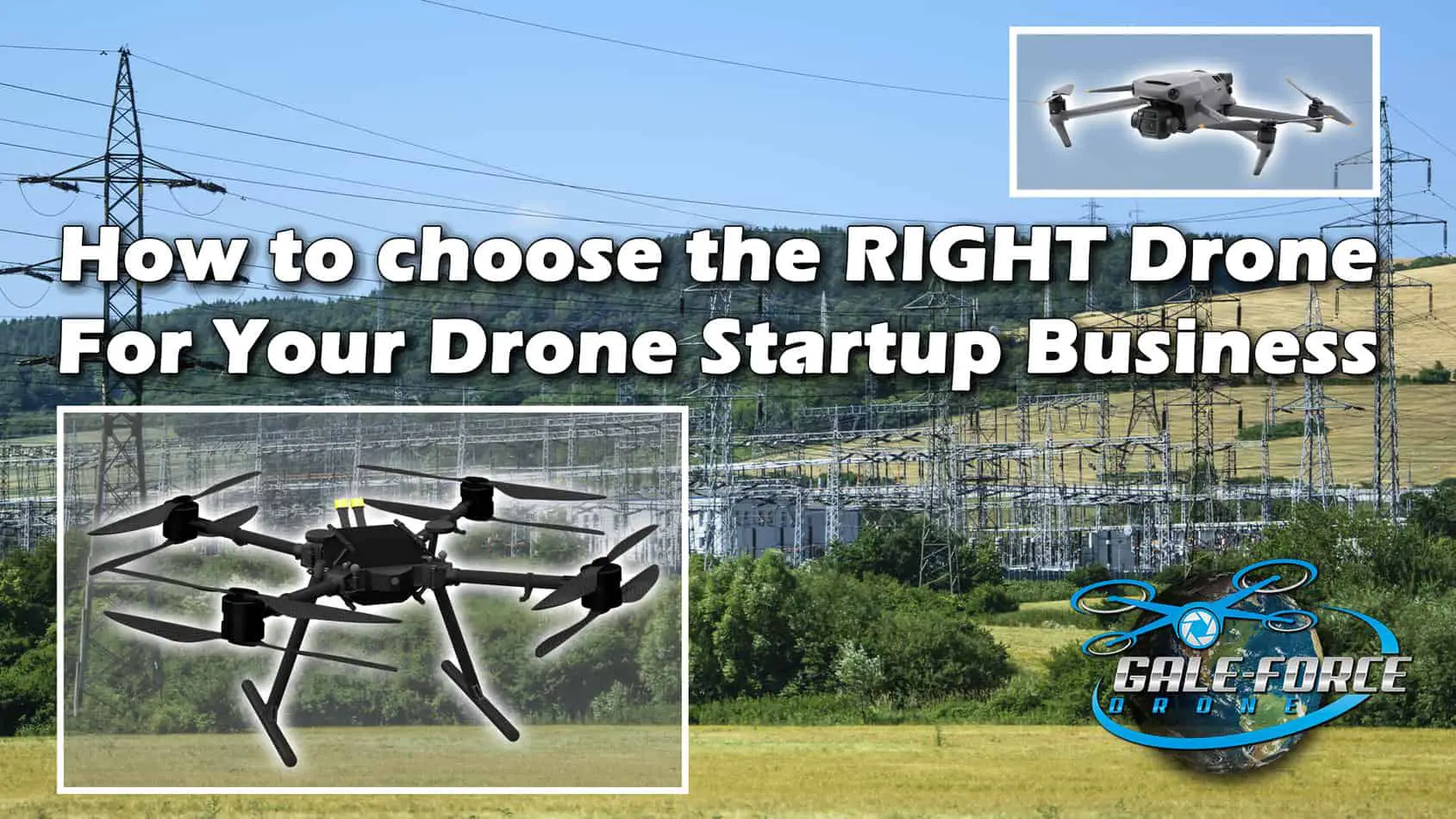
Some drones are packaged bundles geared toward specific use-cases, while others are ala carte menus of add-ons. In the latter case, most vendors are willing to work with you to determine what you’ll need to get the job done, but you must be cautious that they will most likely try to upsell you into purchasing excess items that you may not actually need.
Some drone pilots start out as drone hobbyists, and transition into commercial work. Others start out in other industries, such as photography and surveying, and choose to integrate drones into their normal line of work. Still others come from a manned aviation background, and finally see the light that drones are the way of the future.
Regardless of how you came into this community, you have some very important decisions to make with how you equip yourself. One of the most pressing questions is this: which drone should I use for my drone startup business?
This can be overwhelming for the novice drone pilot. After all, the new drone pilot is just trying to answer a simple question: what is the right drone for the job?
That is the question we will help you answer.
Before we get into comparing drones for different missions, let’s take a step back and think about the business. After all, you won’t be in business very long if you spend all your cash on exquisite equipment, and then fail to make a profit. Keep reading to learn how to select the drone that is not only right for the job, but is also right for your business.
ASSET vs LIABILITY
According to Robert Kiyosaki, an “asset” is something that puts money in your pocket, while a “liability” is something that takes money out of your pocket. Be sure to keep this principle in mind when investing in equipment for your business.
Let’s look at a couple examples of what this means in practical terms.
- Take Linda’s baking business, for example. She realized that her home oven wasn’t sufficient to meet customer demand and decided to invest in a $5,000 oven specifically for her business. This upfront investment paid off, as she was able to increase her weekly revenue to $1,000 and earn a profit of $300 per week. While the initial cost was significant, she broke even after just 17 weeks and went on to make a profit of $100,000 over the next 10 years. Linda’s oven was an asset that generated significant returns.
- On the other hand, let’s consider Tim, a contract food delivery driver who decided to upgrade to a cooler car to increase his tips. While he did see an increase in tips initially, he failed to consider the ongoing costs of owning and maintaining a sports car. These expenses, such as fuel, insurance, and oil changes, slowly ate away at his profits, ultimately costing him around $2,500 over the next 10 years. Tim’s sports car was a liability that drained his resources.
What is the difference between Linda and Tim? Both had up-front expenses, but Linda made a huge ROI, while Tim slowly drained his bank account. Both had higher revenue with their new equipment, but Linda was more successful than Tim in managing her recurring and non-recurring costs. Linda stayed in business, while Tim had to move back into his parents’ basement—at least he had a cool car to show for it.
Remember, as a drone service provider, you’re not just a pilot, you’re a businessperson. By adopting a business mindset and making informed equipment decisions, you can set yourself up for success and achieve your goals.
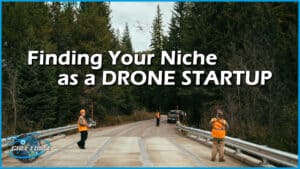 Click in to my article “How to Choose Your Niche as a Drone Startup” to learn how to best determine what services you are most suited to offer.
Click in to my article “How to Choose Your Niche as a Drone Startup” to learn how to best determine what services you are most suited to offer.
Choosing the RIGHT Drone for the job
Let’s turn the conversation back to determining which you will need for your Drone Startup Business? When making an investment into business assets, there are two general schools of thought.
- Buy to Budget
- Minimum Viable Product (MVP)
Buy to Budget means that you set a budget for what you can reasonably afford, and you buy the best, or the most, that you can within this figure. It could be the best drone, or two mediocre drones, or one mediocre drone with several extra batteries and a swanky software subscription. However, while this approach may give you the best gear in town for a year or two, it is not a sustainable strategy in the long run.
Minimum Viable Product (MVP) takes an alternate approach. MVP considers what is the bare minimum to get the job done in an acceptable manner. The 100MP camera might take the best images, but it looks the same on a 6-inch screen as the 12MP camera, so the 12MP camera gets the job done just fine.
If you invest all your discretionary funds in the highest quality equipment, you will have the best gear in town—for a year or two. You will undoubtedly get more jobs and command a higher price, but the drone industry will inevitably leap-frog your equipment with a new product. Since you spent all your saved funds on one big purchase, you will be unable to upgrade as quickly as your competitors, and you will quickly find yourself with the oldest gear in town until you build back up to your next big purchase.
If you save your funds and invest in the bare minimum equipment, you will find yourself lamenting the exquisite capabilities that your competitors are able to use, and the ease at which they employ them. But you will have cash available for next year’s upgrade when the new model is released, or for accessories, or for a software subscription, and you will have a higher profit margin.
There is not simple answer for which approach you should take with your drone startup business, and your answer probably lies somewhere in between these two extremes. Your own experience level, the volume of work you intend to perform, and the quality of your final products all factor into your decision for how much cash you should invest into your equipment.
MVP - Get the cheapest drone that gets the job done
Remember, the MVP (minimum viable product) approach is all about being lean and agile. By focusing on the minimum viable product, testing and refining, and upgrading and expanding in a measured way, you can build a successful drone startup business without breaking the bank.
Here are three simple steps to follow when using the MVP approach for your drone startup business:
Step 1: Define your Minimum Viable Product – With your service niche in mind, decide what the bare minimum features and capabilities that your drone needs to have in order to provide value to your customers. This may mean sacrificing some of the bells and whistles of higher-end drones, but it will also allow you to keep costs down and start generating revenue sooner.
Step 2: Test and Refine – Once you have your MVP drone, it’s time to start testing it in the real world. Use it to complete jobs for customers, gather feedback, and refine your processes. This step will help you to decide if/any areas where you may or may not need to improve your drone and your workflow, as well as gaining a better understanding of what your customers really need.
Step 3: Upgrade and Expand – With revenue coming in and a better understanding of your customers’ needs, you can begin to invest in upgrading your equipment and software tools, as well as expanding your marketing efforts to reach more customers. By taking a measured approach to upgrades and expansions, you can ensure that you are making smart investments that will help your business grow over the long term.
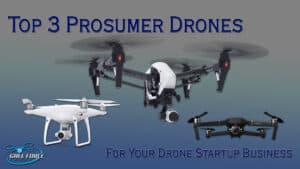 Click into my article “Top 3 Prosumer Drones For Your Drone Startup Business” to see my recommendations for good entry-point drones.
Click into my article “Top 3 Prosumer Drones For Your Drone Startup Business” to see my recommendations for good entry-point drones.
Benefits of the MVP Approach
There are plenty of websites that encourage you to buy the most expensive drone that you can, so we will take a contrarian approach: we will encourage you to buy the cheapest drone that gets the job done. Don’t let “perfect” get in the way of “good enough”. Flying the drone and collecting imagery is only part of the equation; the rest involves running your startup drone business.
If you are a novice drone pilot, you probably appreciate drone technology, but are not yet sure about what kind of drone work you want to do. using an MVP drone can be advantageous in multiple ways. For one, it allows you to explore a variety of industries and missions to find your niche. A basic drone with a daytime RGB camera can serve many purposes and give you the chance to gain experience and explore different avenues without breaking the bank.
As you build experience, you may even find that your tastes change. Many drone pilots start out in the Real Estate industry, but the drone that was perfect for your Real Estate work may not be the right fit for other industries, and an expensive upgrade may not be worth the investment, yet. By using an MVP approach, you can remain nimble and adaptable, adjusting your equipment and processes as your business evolves.
The early stages of a drone startup business include much more learning than just flying a drone: there are numerous business processes that need to be mastered, from acquiring and maintaining customers to processing imagery and managing expenses. By taking an MVP approach, you can build revenue while maintaining a comfortable cash reserve, giving you the flexibility to invest in workflow automation and broaden your marketing efforts.
Ultimately, following an MVP approach gives you the opportunity to find your niche market and deeply understand your customers’ needs. By customizing your equipment, software, and business processes to meet those needs, you can build a successful drone business that truly meets the demands of the market. So don’t let “perfect” get in the way of “good enough” – start with an MVP drone and watch your business soar.
The Right Drone for the Job
Now that we’ve looked at the 2 principals to determine your budget, let’s apply these concepts to selecting the right drone for the job. Each type of mission will entail some characteristics of your equipment to optimize it for the task at hand. We will use “Good” to describe an MVP setup, “Better” for a step up from the bare minimum, and “Best” for the top of the line in today’s market. Remember that this is just a list of properties, and you can absolutely pair a “Good” airframe with a “Better” camera and “Best” software if you choose. Think of it as a general drone buying guide to help you make informed decisions.
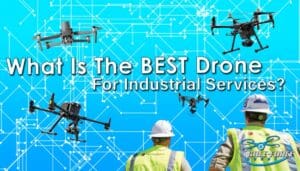 Click into my article “What is the Best Drone For Industrial Services” to see my recommendations for commercial drone services.
Click into my article “What is the Best Drone For Industrial Services” to see my recommendations for commercial drone services.

This category combines structures, pipelines, powerlines, solar panels, and turbines. It is very broad and difficult to summarize in one paragraph. To characterize it broadly, this is the genre of drone work that thrives from thermal imaging. Companies that lose just a few dollars a day to minor damage and leaks might lose thousands or millions of dollars over a long timespan. This broad category typically requires a very robust drone with a sophisticated sensor and processing software.
- Good
- Airframe: Quadcopter
- Battery: 15-20 minutes
- Camera: 20MP, rolling shutter
- Gimbal: 2D stabilized, tilt
- Flight Modes: Stabilized, Waypoints
- Accessories: Geotagged images
- Example Software: OpenDroneMap
- Example Drone Kits: Parrot Anafi, DJI Phantom 4, Autel EVO 2
- Better
- Airframe: Hexacopter
- Battery: 20-30 minutes
- Camera: 320×240 thermal
- Gimbal: 3D stabilized, tilt
- Flight Modes: Stabilized, Waypoints, Autogrid
- Accessories: Geotagged images, GCPs, obstacle avoidance
- Example Software: Scopito, Agisoft
- Example Drone Kits: DJI Mavic 2, Parrot Anafi Thermal, Autel EVO 2 Dual R, Skydio X2, DJI Matrice M200-M300, Freefly Astro, FLIR ION M440, FLIR SkyRanger R70
- Best
- Airframe: Octocopter
- Battery: 30-45 minutes
- Camera: Dual mode 640×480 thermal and 4K RGB
- Gimbal: 3D stabilized, tilt
- Flight Modes: Stabilized, Waypoints, Autogrid
- Accessories: Geotagged images, GCPs, obstacle avoidance, PPK/RTK kit
- Example Software: PrecisionHawk, Pix4D
- Example Drone Kits: DJI Matrice M300-M600, Yuneec H520, Watts PRISM, Easy Aerial Osprey, Freefly Alta 8

Mapping requires high resolution photographs that can resolve small features on the ground or structure. This is typically quantified as Ground Sample Distance (GSD). Think of GSD as the area that each image pixel covers. For reference, most commercial satellite imagery is in the 1-5m GSD range. Some drone mapping jobs for non-industrial purposes can get by with a GSD of 10cm, while others need less than 1cm resolution. Low resolution cameras can capture the same GSD at low altitudes (50 ft) that high resolution cameras can capture from high altitudes (200 ft)—you just need more pictures, closer together. You also must understand if the job requires absolute accuracy (object locations in the image are closely matched with their real-world latitude/longitude) or relative accuracy (the distance between objects in the image matches the distance between them in the real world). Most shots will be straight down (nadir), or close to it.
- Good
- Airframe: Quadcopter
- Battery: 15-20 minutes
- Camera: 12MP, rolling shutter
- Gimbal: 2D stabilized, tilt
- Flight Modes: Stabilized, Waypoints
- Accessories: Geotagged images
- Example Software: OpenDroneMap, QGIS
- Example Drone Kits: DJI Phantom 4, Autel EVO 2, Parrot Anafi
- Better
- Airframe: Quadcopter
- Battery: 20-25 minutes
- Camera: 20MP, rolling shutter
- Gimbal: 3D stabilized, tilt
- Flight Modes: Stabilized, Waypoints, Autogrid
- Accessories: Geotagged images, GCPs
- Example Software: MapsMadeEasy
- Example Drone Kits: DJI Matrice M200-M300, DJI Inspire 2, Easy Aerial Falcon, Freefly Astro, SkyFish M4, Full Throttle Falcon
- Best
- Airframe: Octocopter
- Battery: 30-40 minutes
- Camera: 40MP, mechanical shutter
- Gimbal: 3D stabilized, tilt
- Flight Modes: Stabilized, Waypoints, Autogrid
- Accessories: Geotagged images, GCPs, PPK/RTK kit
- Example Software: DroneDeploy, Pix4D
- Example Drone Kits: DJI Phantom 4 RTK, DJI Matrice M600, Skydio 2+, Skydio X2, Easy Aerial Osprey, Freefly Alta 8

Many of the small area considerations also apply to large areas. The biggest difference, obviously, is the acreage you must cover. A small job might be a 5 acre site or smaller, while large jobs can reach hundreds of acres. The topography matters since there is a difference between open fields and dense forests. The customer needs might drive you from an inexpensive RGB camera to an expensive LIDAR sensor if their needs include powerlines or dense foliage.
- Good
- Airframe: Quadcopter
- Battery: 25-30 minutes
- Camera: 20MP, rolling shutter
- Gimbal: 2D stabilized, tilt
- Flight Modes: Stabilized, Waypoints
- Accessories: Geotagged images
- Example Software: OpenDroneMap, QGIS
- Example Drone Kits: DJI Matrice M200-M300, DJI Inspire 2, DJI Phantom 4 RTK
- Better
- Airframe: Octocopter
- Battery: 30-40 minutes
- Camera: 40MP, mechanical shutter
- Gimbal: 3D stabilized, tilt
- Flight Modes: Stabilized, Waypoints, Autogrid
- Accessories: Geotagged images, GCPs
- Example Software: MapsMadeEasy
- Example Drone Kits: DJI Matrice M600, Teledyne CL-90, Watts PRISM
- Best
- Airframe: Fixed-wing
- Battery: 60-90 minutes
- Camera: LIDAR
- Gimbal: 3D stabilized, tilt
- Flight Modes: Stabilized, Waypoints, Autogrid
- Accessories: Geotagged images, GCPs, PPK/RTK kit
- Example Software: DroneDeploy, Pix4D
- Example Drone Kits: SenseFly eBee, WingtraOne GEN II

Basic photography is all about the quality of camera and editing software. It is beneficial to have a drone with some endurance, so you can capture all the shots on a single battery. You will want a stable platform, and you will also want a stabilized gimbal to hold the camera to minimize blur. Various flight modes and pan/tilt options give you more room for creative shots, especially when shooting video. These jobs can be very short, and it is helpful to have a drone you can launch in under two minutes to minimize your time at the site.
- Good
- Airframe: Quadcopter
- Battery: 10-15 minutes
- Camera: 12MP / 4K
- Gimbal: 2D stabilized, tilt
- Flight Modes: Stabilized
- Accessories: None
- Example Software: GIMP, DJI Go
- Example Drone Kits: Parrot Anafi, DJI Phantom 4, Autel EVO 2
- Better
- Airframe: Hexacopter
- Battery: 20-25 minutes
- Camera: 20MP / 6K
- Gimbal: 3D stabilized, tilt
- Flight Modes: Stabilized, Waypoints, Orbit
- Accessories: ND filter
- Example Software: Corel PaintShop, DJI Pilot
- Example Drone Kits: DJI Mavic 3, DJI Inspire 2, Yuneec Typhoon, Freefly Astro
- Best
- Airframe: Octocopter
- Battery: 30-40 minutes
- Camera: 40MP / 8K
- Gimbal: 3D stabilized, pan & tilt
- Flight Modes: Stabilized, Waypoints, Orbit
- Accessories: ND filter, optical zoom lens, obstacle avoidance
- Example Software: Adobe Photoshop, Adobe Lightroom
- Example Drone Kits: DJI M200-M600, Yuneec H520, Freefly Alta 8, Watts PRISM

Most people won’t hire a drone pilot to inspect a small backyard garden, so we will assume that any agriculture inspection job is for a field that is at least several acres. The most cost-beneficial use of drones in agriculture inspection come from larger farms that span thousands of acres. These jobs benefit from long endurance, a sensor that works outside the range of the human eye, and precision geotagging.
- Good
- Airframe: Quadcopter
- Battery: 25-30 minutes
- Camera: 20MP, rolling shutter
- Gimbal: 2D stabilized, tilt
- Flight Modes: Stabilized, Waypoints
- Accessories: Geotagged images
- Example Software: OpenDroneMap, FIELDimageR
- Example Drone Kits: DJI Phantom 4 Multispectral
- Better
- Airframe: Octocopter
- Battery: 30-40 minutes
- Camera: NDVI
- Gimbal: 3D stabilized, tilt
- Flight Modes: Stabilized, Waypoints, Autogrid
- Accessories: Geotagged images, GCPs
- Example Software: Measure, PrecisionHawk, DJI Terra
- Example Drone Kits: DJI Agras, Watts PRISM, Freefly Alta 8
- Best
- Airframe: Fixed-wing
- Battery: 60-90 minutes
- Camera: NDVI, NDRE
- Gimbal: 3D stabilized, tilt
- Flight Modes: Stabilized, Waypoints, Autogrid
- Accessories: Geotagged images, GCPs, PPK/RTK kit
- Example Software: DroneDeploy, Pix4D
- Example Drone Kits: SenseFly eBee, WingtraOne GEN II
 Click into my article “What is the Best Drone For Industrial Services” to see my recommendations for commercial drone services.
Click into my article “What is the Best Drone For Industrial Services” to see my recommendations for commercial drone services.

Wrap Up...
To summarize, we covered how to set your budget for drone equipment, and how to evaluate which drone is right for the job as well as right for your business. Be sure to check all the features before making a purchase; we would hate to see you waste precious money on obstacle avoidance when you are only flying over open fields!
We hope you realize that no drone lasts forever, and you will have another chance to purchase new equipment and software in a few years to keep up with changes in technology, customer needs, and your personal tastes. We wish you the best of luck on choosing your market and purchasing your equipment. Please follow us on social media to leave comments or contribute some tips to your fellow drone pilots.
How To Get Your FAA Part 107 Pilot Certification
If you are serious about making money with your drone, whether it be Real Estate, Aerial Inspections, etc., then you will need, from the FAA a 14 CFR Part 107 certification.
The best source for your training can be found by clicking on RemotePilot101. Jason Schappert is a pilot and author of 8 best-selling aviation flight training books. While studying and taking tests is not the most fun, Jason breaks it down into 10 easy to follow (at your own pace) video lessons. These lessons are straight and to the point giving you the exact knowledge, nothing less, nothing more than what you need to pass the exam. Additionally, he is continually updating the training to keep it relevant to any changes to FAA regulations. This membership is a 1-time subscription – for life! So when you’re 24 month renewal comes around, just sign in to RemotePilot101 and refresh your training.
Just remember, if you are flying commercially, you will need your Part 107 certification. It’s not hard, you can do it!
